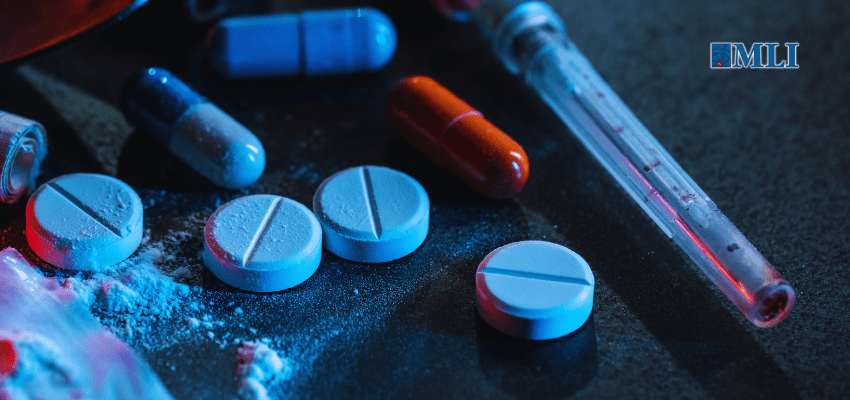This article originally appeared in the Western Standard.
By Liam Hunt, September 7, 2024
One of Ontario’s leading addiction physicians, Dr. Martyn Judson, says that Canada’s “safer supply” programs are not evidence-based and that they are actually exacerbating, not mitigating, the national addiction crisis. He wants these programs, which he describes as “terrible” and “depraved,” to be reformed or abolished as quickly as possible.
Judson has practiced addiction medicine in London, Ontario for four decades and was the first doctor in the province to provide methadone, a now-standard addiction medication, in the 1980s. He later wrote the province’s methadone prescribing guidelines and founded his own practice, Clinic 528, which eventually expanded to serve 1,400 patients with the assistance of 22 other addiction physicians.
Since 2016, Judson’s community has been home to an increasing number of “safer supply” programs, which offer large quantities of pharmaceutical-grade addictive drugs — typically hydromorphone, an opioid as potent as heroin — to vulnerable addicts. The goal is to provide users with an alternative to riskier street substances, but, in reality, most clients “divert” (sell or trade) their safer supply on the black market, which then floods communities with the drug.
According to Judson, it was evident from the very beginning that safer supply was destabilizing some patients and undermining their recoveries.
“I had a young [patient], he must have been about 25,” recounted the doctor, describing one particularly painful incident in 2016. “He wanted to go to this safer supply clinic down the street, the first in London, and [so] he stopped seeing me for methadone. Now I believe he’s dead.”
As safer supply has become more available, the street price of hydromorphone has collapsed by approximately 90 per cent and uptake of evidence-based addiction treatments, such as methadone, has collapsed Says Judson, “What we’ve got with safer supply is [that] we enable your addiction to perpetuate… We will give you what you want, not what you need.”
From his office in inner-city London, Judson routinely observes dangerously intoxicated addicts stumbling through the streets with prescription pill bottles in hand. “There are some parks that I used to cycle through,” he said. “But now you’ve got to weave your way through tent encampments. The shops have gone. We’ve lost so much […] We can use drugs downtown, and the police just walk right by you.”
Judson says that a critical flaw in Canada’s safer supply programs is that recipients are given large amounts of addictive drugs with minimal oversight. As there is rarely any requirement that these substances be consumed under the supervision of a medical professional, it is unsurprising that diversion has been rampant, he says.
Safer supply advocates often downplay safer supply diversion and claim that urine testing can determine whether recipients are consuming their drugs as intended — but Judson finds this attitude astounding.
“They check their urine to see that there’s hydromorphone in it, but just one pill would turn that test positive,” he says, noting that a safer supply recipient can pass drug testing protocols by taking only one-sixteenth of their daily dose while potentially diverting the rest.
In July, the London Police Service announced that after access to safer supply was greatly expanded in 2020, hydromorphone seizures skyrocketed across the city by more than 3,000 — from less than 850 pills in 2020 to approximately 30,000 pills in 2023. In a press conference, London police chief Thai Truong said that safer supply is now being trafficked by gangs and “the highest levels of organized crime.”
Judson describes the current system as one in which unscrupulous doctors, driven by financial gain and misguided compassion, are recklessly prescribing safer supply with no accountability.
“They want many patients on the program, because then they can submit statistics to Health Canada to justify their funding,” Judson alleges, pointing to what he sees as a cycle of perverse incentives. “They’re culpable,” he added starkly. “It’s almost like involuntary manslaughter.”
Judson says that the studies which back safer supply have “zero” legitimacy, as they often rely on qualitative patient interviews, questionnaires and focus groups. He says these methods, which gather “anecdotal” and “testimonial” evidence, can be easily manipulated by participants that are incentivized to provide responses that justify continuing the program.
“If you want to get high all day, you’d say, Yes, it’s working wonderfully, doctor,” he explained. “That’s how they’ve come up with their research. It’s flawed. It’s not a double-blind control trial [and] it doesn’t meet the necessary rules and regulations of comprehensive peer-reviewed research.”
Judson is calling for the end of unsupervised safer supply programs, advocating instead for a renewed focus on traditional medications, which have credible evidence bases, and abstinence-based solutions.
“The pendulum will swing back,” he maintains. “Because people’s level of tolerance will reach a pitch, and they’ll have had enough.”
Liam Hunt is a Canadian writer with significant recent international experience in eastern Europe and central Asia. This article was commissioned by the nonprofit Centre For Responsible Drug Policy.






